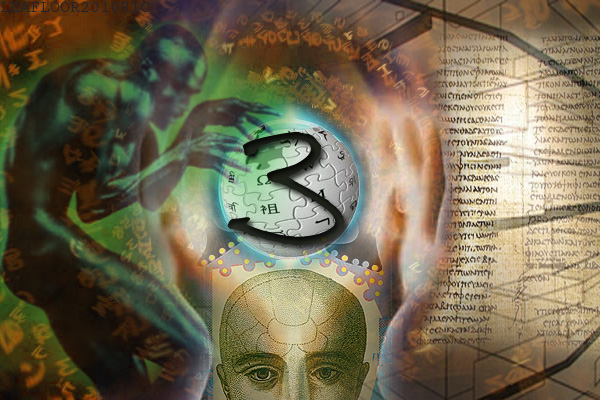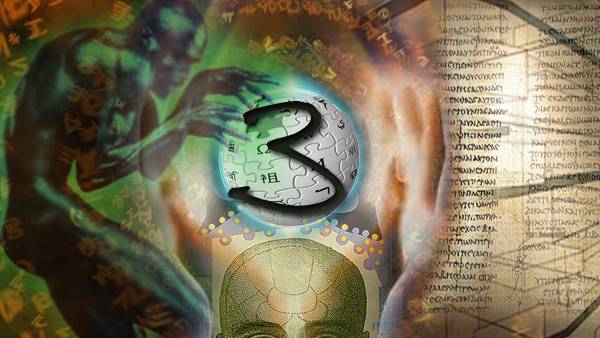Are you ready for life in WORLD 3?
Source: newscientist.com

In the 1970s, Karl Popper came up with a philosophical theory of reality that involved three interacting worlds: the physical world, the mental world, and "world 3", which comprises all products of the human mind - from ideas, pictures and music to every word ever written.
Something very similar to world 3 is now real and increasingly influencing how we live, says George Djorgovski, co-director of the Center for Advanced Computing Research at Caltech. It’s called the internet.
It’s the first morning of Science Foo camp, and I’ve chosen a session called "virtualisation of science and virtualisation of the world". In fact - fittingly for a meeting being held at Google headquarters - how we deal with life increasingly lived online turns out to be one of the main themes of the day.
Djorgovski reckons that before long, being online will soon mean (among other things) not staring at a computer screen but being immersed in 3D virtual reality.
He thinks this will be key to how we’ll make scientific discoveries in the future. Forget graphs - two dimensions are totally inadequate for dealing with the vast amounts of data pouring out of everything from high-throughput genome sequencing to atom smashers like the Large Hadron Collider. We’ll need machine intelligence capable of analysing these huge data sets, he says, as well as ways to visualise and interact with the results in three dimensions.
Such technologies will surely revolutionise education too, with virtual learning replacing the traditional lecture. Djorgovski wants scientists and researchers to get more involved with this process now, pointing out that so far, advances in 3D technology are all coming from the entertainment industry: "We can’t let the video game industry drive the future in what’s the most important technology on the planet. There has to be more to it than spilling blood and slaying dragons."
Sitting round the table are experts in everything from psychology and bioethics to space science. Pat Kuhl, an expert in early child learning from the University of Washington, wonders what learning everything online will do to young brains. The consensus around the table is that good or bad, the move into virtual reality environments is inevitable. "So let’s try and offer something more than games," says Djorgovski.
In a subsequent session on children’s minds, Kuhl tells us about the importance of social cues in early learning. For example, it’s well-known that babies differ in their ability to distinguish sounds, depending on the language they are exposed to, by the time they are 10-12 months old. But Kuhl and her colleagues have recently shown that simply hearing the sounds is not enough. After a few sessions with a Mandarin speaker, American babies could distinguish certain sounds as well as Taiwanese babies, but those given the same exposure via audio or video learned nothing.
So if we don’t want kids’ brains to atrophy in an increasingly virtual world, we must work out how to incorporate the relevant social cues. Kuhl has already found that making the TV screen interactive, so babies can turn it on and off by slapping it, increases - a little bit - how much they learn. She’s now experimenting with web cams.
In the afternoon, UK journalist and commentator Andrew Marr tackles the question of what will happen to journalism in an online world, particularly as e-readers like the iPad - which Marr calls a "great engine of destruction" - become ubiquitous.
The media we consume will no longer be just words, or just pictures, but a collision of text, video, audio and animated graphics. And people will be able to choose individual items to consume, rather than buying a whole newspaper or watching just one channel.
Like most commentators, Marr thinks this will be the end of newspapers - and perhaps of traditional journalists too. But he thinks this can only be a good thing, arguing that journalism, with its short-term focus and trivial level of debate, has been failing us anyway. In the future he thinks news will come from niche, specialist groups, for example people interested in access to clean water, coming together online. These might include bloggers, campaigners and lobbyists. Above them, authoratitive news aggregators will pick out the most important stories of the day and feed them to the rest of us.
Marr says this new model will be good for journalism and for democracy, because the people within each community of interest will be experts, and won’t lose interest in a topic in the way that traditional reporters do.
I’m sure Marr’s right that newspapers as we know them are not going to survive. But I don’t feel so optimistic about his vision. I’m not sure that having aggregators pick from a pool of stories written by specialists with an agenda is necessarily going to give us good journalism. Who is going to write articles in a way that non-specialists can understand? Who will make connections between different fields? Who will have the authority to hold politicans to account? Unfortunately the session ends before we have a chance to get into these questions.
Read the full article at: newscientist.com
Wikipedia on "WORLD 3":
The World3 model was a computer simulation of interactions between population, industrial growth, food production and limits in the ecosystems of the Earth. It was originally produced and used by a Club of Rome study that produced the model and the book The Limits to Growth. The principal creators of the model were Donella Meadows, Dennis Meadows, and Jørgen Randers.
The model was documented in the book Dynamics of Growth in a Finite World. It added new features to Jay W. Forrester’s World2 model. Since World3 was originally created it has had minor tweaks to get to the World3/91 model used in the book Beyond the Limits and later was tweaked to get the World3/2000 model distributed by the Institute for Policy and Social Science Research.
...
There has been quite a bit of criticism of the world3 model. Some has come from the model creators themselves, some has come from economists and some has come from other places.
One of the major criticisms of the model is that it simply has not reflected the reality of the world since the 1970s when the model was first published. This criticism is in general false, since most of the predictions of doom or collapse do not begin to occur until around 2015 in the reference run. The model predicted that humanity would run up against the fundamental limits to economic growth about a century after the publication of the book: i.e. 2072, with extremely serious ecological problems only beginning to become obvious in the 2030s and 2040s.
[Source]






















